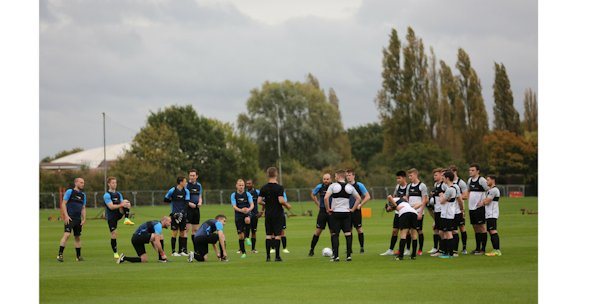How to engage people through sport
Sport has long been a go-to platform for brands looking to connect with an audience, and for good reason. People care passionately about sport, and by aligning with it, marketers hope some of that fan passion will extend to their brand.

Engaging people through sport by putting the players first
Reaching fans is one thing, but I feel that brands often overlook the most highly engaged, committed and passionate people at the heart of any sport: the people who play week in, week out. While some sports are struggling for participation, we are still talking about millions of people actively involved on a regular basis. Sport England’s latest data showed that 41% of men and 29% of women take part in sport at least twice per month, and 15% get involved through volunteering.
For those who play, organise and support sport at the grassroots level, it’s a huge part of their life, something they care deeply about and spend money on. This is something that brands can tap into, but many get seduced by the glamour of the elite end of sport and ignore the grassroots opportunity. Too many sponsorships are still treated as little more than a media buy, with basic brand awareness as the sole objective. This strategy can work for new brands entering a market, but it really does leave an awful lot of potential consumer engagement on the subs’ bench.
The other approach often tried by brands (with or without a sponsorship deal in place) is to make a clumsy attempt to associate themselves with a big sporting event when it comes around. If 2014 was anything to go by, we can expect another festival of cliched campaigns around Russia 2018 involving blokes watching 'the footy', with little in the way of credibility or meaningful connection to fans.
I think a lot of brands would be far better to focus on creating real engagement with the people who actually play (or coach, or support) the game. For a relatively modest investment, a brand could make a huge difference to a sport at the grassroots level, creating authentic and lasting engagement with a large and highly influential audience.
The really smart brands use sponsorship to create multi-layered campaigns, that span the brand visibility of an elite team right through to impactful community programmes that make a real difference. Natwest in cricket and McDonald’s in football are two of the best, long-running examples. And don’t think this is just about CSR or a brand doing good for its own sake: our own research recently showed that 63% of people are more likely to buy from a brand that aligns itself to something they are passionate about.
One challenge with grassroots campaigns used to be the fragmented nature of amateur sport and the difficulty of communicating at scale with the millions of people playing in different teams, leagues and competitions around the country. Technology has changed that, with digital platforms like Pitchero (one of our clients) providing brands with a whole host of ways to engage players, managers, coaches and parents of amateur teams.
Grassroots sport has also taken off on social media. The likes of Hashtag United have built a vast following while being, essentially, a mediocre amateur team. Meanwhile, publishers like Sport Bible and Grass Root Goals regularly pull in millions of views of clips from amateur sport, with specialist businesses like Match Day Media springing up to connect brands to the grass roots through social platforms.
Sport remains one of the most powerful ways for brands to connect with people. But if you want to make a real impact, focus on the players as well as the fans.
Eddie May is managing director at The Playbook.
Image source: PlayerTek

